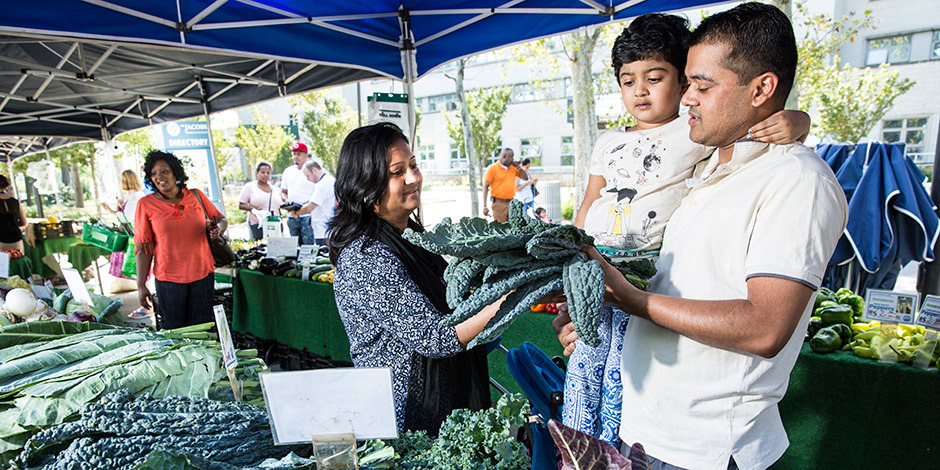|
Two recent studies highlight the dangers of secondhand and thirdhand smoke, underscoring the need for universal clean air laws.
A new study released this month showed that nearly all children, including 95% of kids from nonsmoking homes, have traces of tobacco on their hands. Many people are unaware of the dangers of thirdhand smoke - exposure to chemicals from smoke that has settled in dust and on surfaces long after a smoker or vaper leaves - but researchers show it is widespread.
The study also pointed to an association between income, housing disparities and rate of thirdhand smoke exposure, suggesting decades of permissive smoking policies have created persistently toxic environments that continue to impact children today. Thirdhand smoke can persist at stable levels over extended periods, creating conditions for inhalation, ingestion and dermal exposure to harmful chemicals.
CLICK HERE to read the report about thirdhand smoke exposure and kids.
Another recently released study found that exposure to secondhand vape increased teens' risk of bronchitis symptoms by 40% and shortness of breath by 53%. This is especially noteworthy because many people mistakenly believe that vapes are safe to use around others. In reality they are filled with chemicals known to cause cancer and disease, and those chemicals are released in the air each time they are exhaled.
The study concluded that the health effects from secondhand vapor are similar in magnitude to those associated with secondhand smoking, and comprehensive clean air laws should be updated to include protection against vapes.
CLICK HERE to read about the link between secondhand vape and bronchitis in teens.

THE JOURNAL RECORD
The American Lung Association released its annual State of Tobacco Control report. Find out how Oklahoma scored and why it matters in TSET's most recent Journal Record column.
|
TSET will accept applications for the Healthy Community Incentive Grant program from Tuesday, March 1 to Friday, April 1, 2022 at 4 p.m.

To be eligible, communities must first adopt health policies and implement practices encouraging tobacco-free environments, access to healthy and nutritious foods and opportunities for physical activity.
Grant funds may be used for a variety of projects that promote healthy and active living, including walking trails, farmers market venues, splash pads, basketball courts and outdoor physical equipment.
TSET Healthy Communities Incentive Grants are open twice a year.
Interested, but not yet ready to apply? Contact Laura Matlock, program officer, at lauram@tset.ok.gov to learn how to prepare for the next application period.

Grants applications for Policy and Built Environment Change or Innovations in Active Living and Healthy Eating are due March 15.
Policy and built environment grants will fund projects that strengthen existing practices to prevent and reduce tobacco use or improve physical activity and nutrition practices. Grants will be funded up to $350,000 per year for to two years and applicants must provide a 1:1 match.
Innovations in Active Living and Healthy Eating grants will fund initiatives that increase participation in regular physical activity and promote nutritious eating. Successful proposals will promote these activities to support widespread change and help reduce risk factors for preventable death and disease in Oklahoma.
The maximum award for grants in Innovation in Active Living and Healthy Eating is $250,000 per year for two years.
Oklahoma communities, non-profit 501(c)3 organizations, tribal nations, institutions of higher learning and public agencies are invited to apply.
|

Making New Year’s resolutions are a common practice, but we often struggle with maintaining them through the year.
In episode 22 of the TSET Better Health Podcast, special guests Dr. Jon Hart, Oklahoma Tobacco Helpline Director, and Dr. Ashley Weedn, a pediatrician specializing in childhood obesity, walk us through what it takes to make lasting lifestyle changes for health and wellness.
"When we initiate a resolution, motivation's high, we feel really good," said Hart. "And kind of like a race, you hear that gun go off and you sprint, but you know if you’ve run a race, if you run too fast at the beginning, you're going to hit that middle section and it's going to be a struggle. Then when you know that finish line's coming up, you tend to have that motivation
to increase again. And so just knowing that middle place is coming and trying to find
little ways to keep the motivation high through that in-between time is important."
Available on TSET's website and everywhere podcasts are listened to: Spotify, TuneIn, Stitcher, PodBean, Google Podcasts and Apple Podcasts.
|